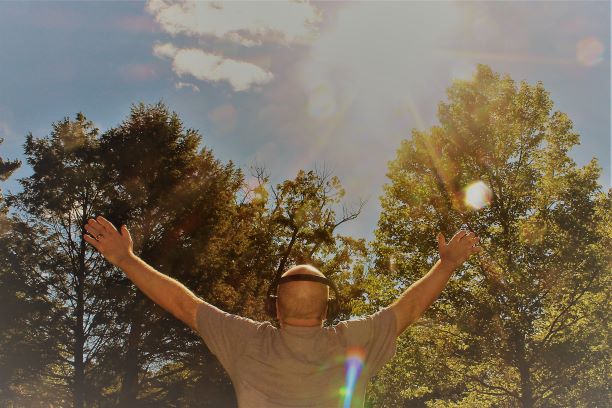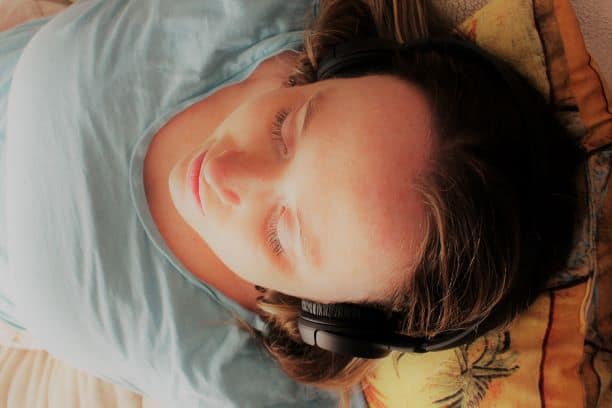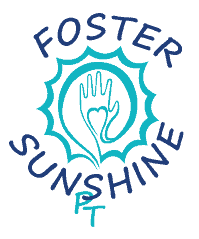
Last month I explored the link between our physical and emotional states. Now I want to dive into the idea of music having a therapeutic impact and the potential for using music in physical therapy as an adjunct to our patient care.
Music has always been, in one way or another, an important part of my life. I almost always have a song in my head, and I focus better with music in the background. Driving with windows down and good music playing is truly one of my happy places. One of my best friends even refers to live music as my love language.
Music makes me feel good, supports me when I am down, and motivates me when I need a boost of energy; certainly, it can do the same for our patients.
‘Music produces a kind of pleasure which human nature cannot do without.’ -Confucius
Music, Physiology & The Brain
If you would like to delve into a fascinating exploration of the relationship between music and neurology, I encourage you to check out Musicophilia: Tales of Music and the Brain by the brilliant Oliver Sacks. There were a couple of areas of the book that I found particularly interesting. One, there is a connection between temporal lobe infarct and subsequent musical phenomena or dysfunction. This could be a new love or ability for music or even musical hallucinations. Two, the physical practice of music, or even just tapping along to music, shows an almost immediate change in the motor cortex on MRI. Testing revealed an increase in activity for both the basal ganglia and the cerebellum. To me, this highlights the almost certain benefit of music therapy for patients with pathology in these areas of the brain.
Dr. Sacks states that music “has an impact on almost every aspect of brain function and life.” He discussed how music is a universal component of all cultures, and that everyone has some innate musicality. Essentially, music activates almost every part of the brain, and can stimulate a person’s reward center through the release of dopamine, oxytocin, and endorphins (likened to a runner’s high, eating chocolate, and even orgasm). The physiological impact is stunning.
Music Can:
- Improve cognition & productivity
- Decrease stress or anxiety
- Manage pain
- Improve mood
- Enhance performance & endurance
- Improve sleep
- Increase blood flow & decrease blood pressure
These are all huge benefits that can only improve our patient outcomes. Rehabilitative improvements after listening to music have been shown in patients with CVA, TBI, and Parkinson’s Disease (hey, basal ganglia!). And it doesn’t stop there. Music has also been used as a strategy to control dyskinesias and Tourette’s tics, and it has been found to engage the brain in individuals that have been impacted by dementia or encephalitis.
‘My heart, which is full to overflowing, has often been solaced and refreshed by music when sick and weary.’ -Martin Luther
Music in Physical Therapy
With all these considerable benefits, it is clear that music can help us in physical therapy. Aside from the neurological patient, music can be used to achieve the goals of many of our patients, across all disciplines.
Relaxation
Meditative and classical music have both been shown to create a relaxing effect, including a slowing of the breath and heartbeat. For patients with higher levels of stress or anxiety, this type of music can aid us in getting them to a more relaxed state. Not only will that make our job easier, but it will make the patient feel better. This is applicable for patients who have experienced trauma, patients with acute pain, and conversely patients with chronic pain whose resting state has become heightened.
Studies have shown that the relaxing effect of listening to music can even decrease a patient’s use of pain medication. As physical therapists we know that movement is the best medicine, but why not use music to help get us there?
‘One good thing about music, when it hits you, you feel no pain.’ -Bob Marley

Motivation & Movement
Music with a faster tempo improves mood, increases arousal, and motivates movement. Fast-paced music can increase patients’ walking pace. People will unknowingly match their cadence to the time of the music, improving gait pattern symmetry and coordination. Upbeat music can also decrease the perceived level of exertion, translating to increased stamina. This is helpful for an athlete trying to condition back to their sport, or for the elderly patient who has become deconditioned. It can even help with a straightforward orthopedic injury to promote a return to their previous level of function with balance and symmetry.
Musicophilia discusses a couple of cases where music was used in rehabilitation after a prolonged period of leg immobilization. These patients were struggling to learn to walk again, one stating, “I could not imagine how to move the leg.” But in both cases, music turned things around by creating an automatic motor response that helped to retrain gait. There was also the case of an athlete achieving his personal best in cycling once he discovered the right musical motivator for him.
I think we all have experienced listening to music that just makes us want to move. That could be raising our hands, tapping our toes, or full out dancing. If movement is your goal, and it almost always is in physical therapy, find the music that moves your patient!
‘Music brings a warm glow to my vision, thawing mind and muscle from their endless wintering.’ -Haruki Murakami
Pediatric Development
I have worked in pediatrics throughout my career. I have seen firsthand how much music can both calm and motivate kids for a more successful treatment. Years ago I even had one child that I would have to sing to throughout our sessions to soothe him enough for participation. Additionally, music can be tied to movement, using rhythm and an upbeat tone that will enhance their learning of a new skill. You will see the children become more willing to take part in something that is likely difficult for them.
‘Kids: they dance before they learn there is anything that isn’t music.’ -William Stafford
Co-treatment Success
I had the opportunity to touch base with a music therapist and physical therapy assistant at The Center for Discovery, a beautiful facility in the Catskills that offers residential, medical, clinical, and special education services. Early in my career, I had the honor of working for this unique place.
These amazing therapists have had many opportunities to co-treat together. They remark on how they have seen improvements in movement, range of motion, and motivation through this collaboration. From the physical therapy perspective, “music provided the motivation for whatever active movement that they could utilize to participate,” and students were more engaged and alert upon returning to their classroom after these sessions.
It may be a rare setting where this type of co-treatment is possible. But if it is an option where you work, I encourage you to pair up! Explore the ways you can help each other and the patient.
Cue the Music
Adding background music to our treatments is such a simple way to achieve some awesome physical effects and enhance outcomes. Our digital world makes it easy to call up any music you want at any time. So the next time you have a patient who just can’t relax, or doesn’t want to move, consider turning on the tunes!

Recent Comments